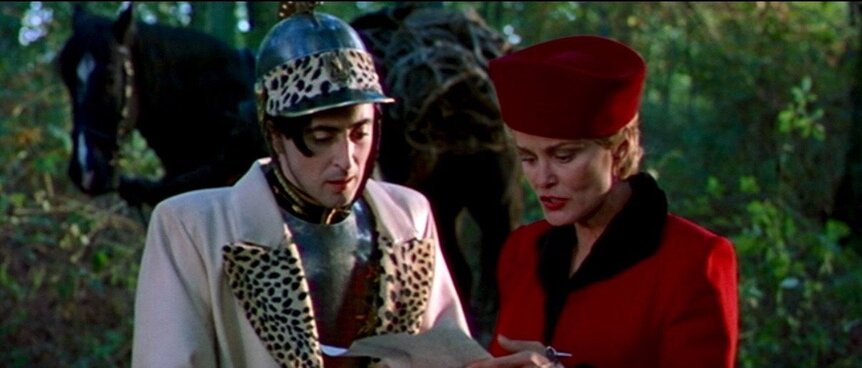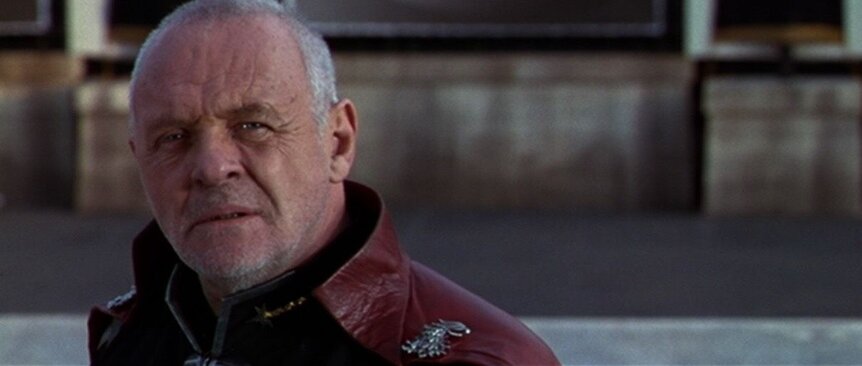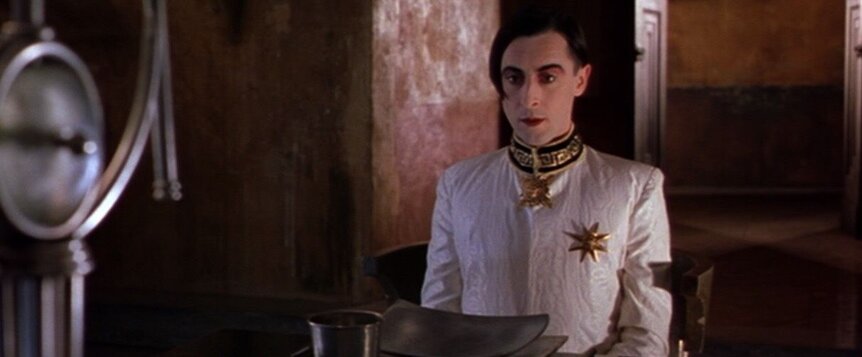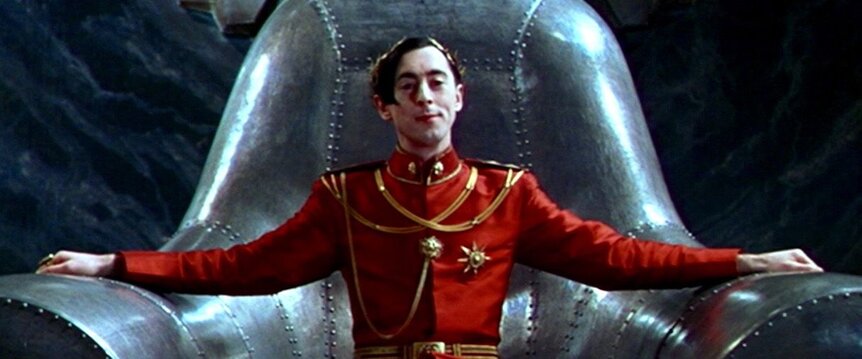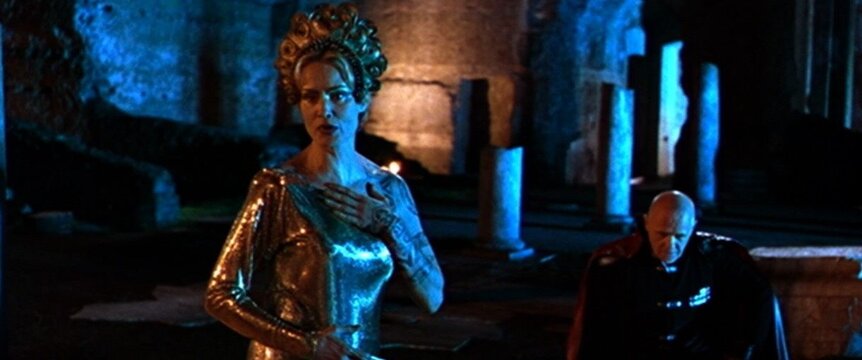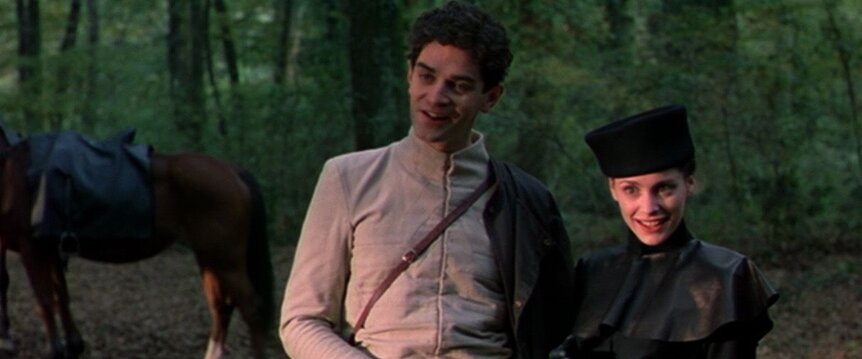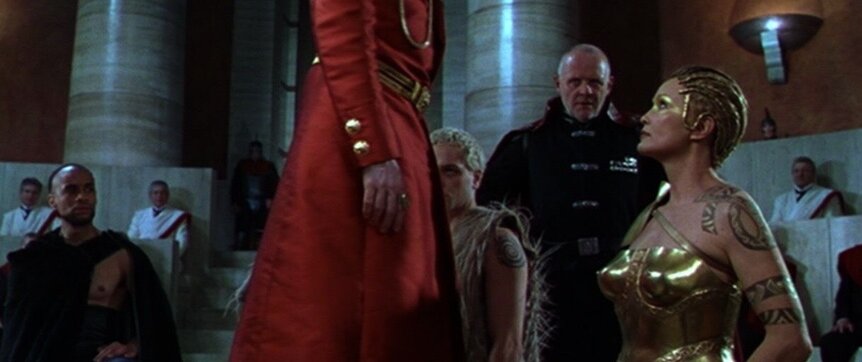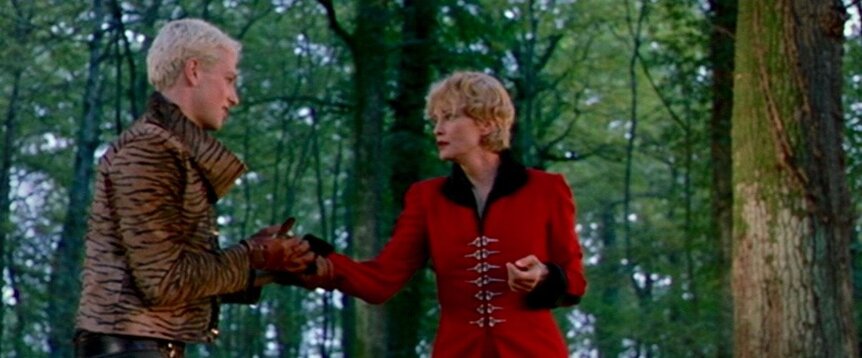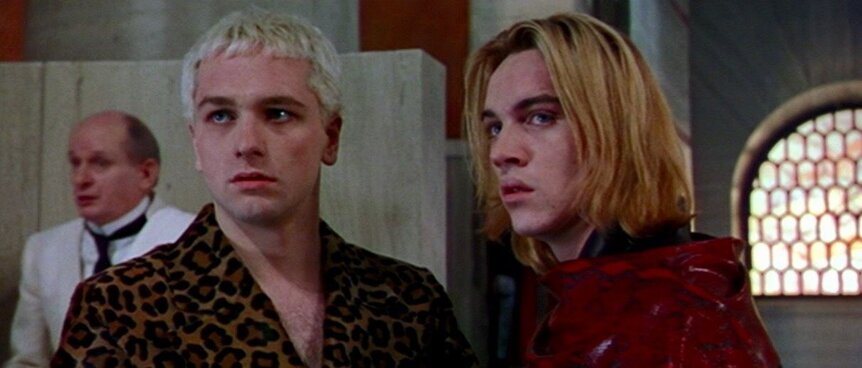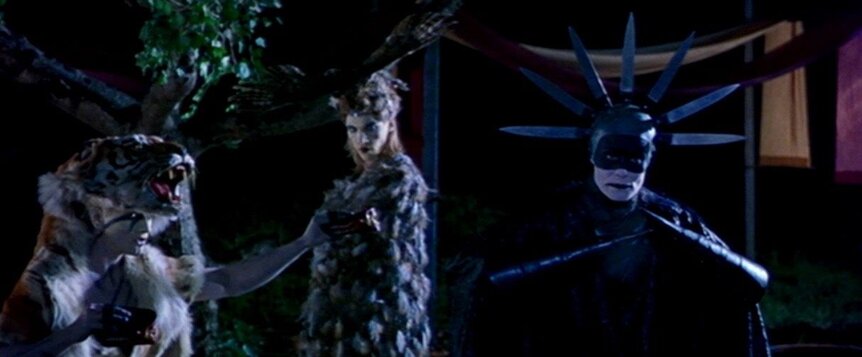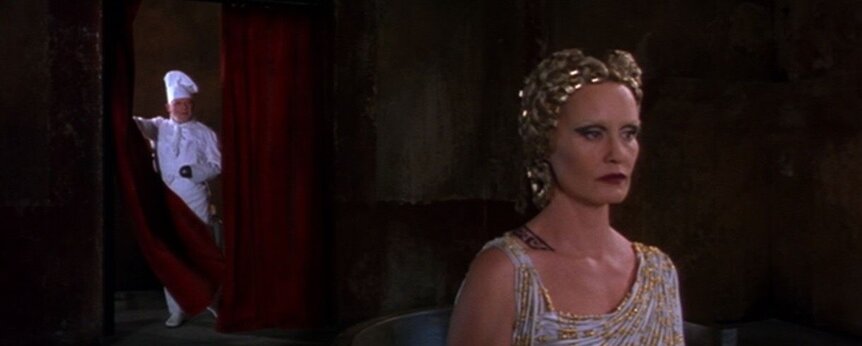Create a free profile to get unlimited access to exclusive videos, sweepstakes, and more!
Leather and leopard print: The 'retro-contemporary-futuristic' costumes of Titus
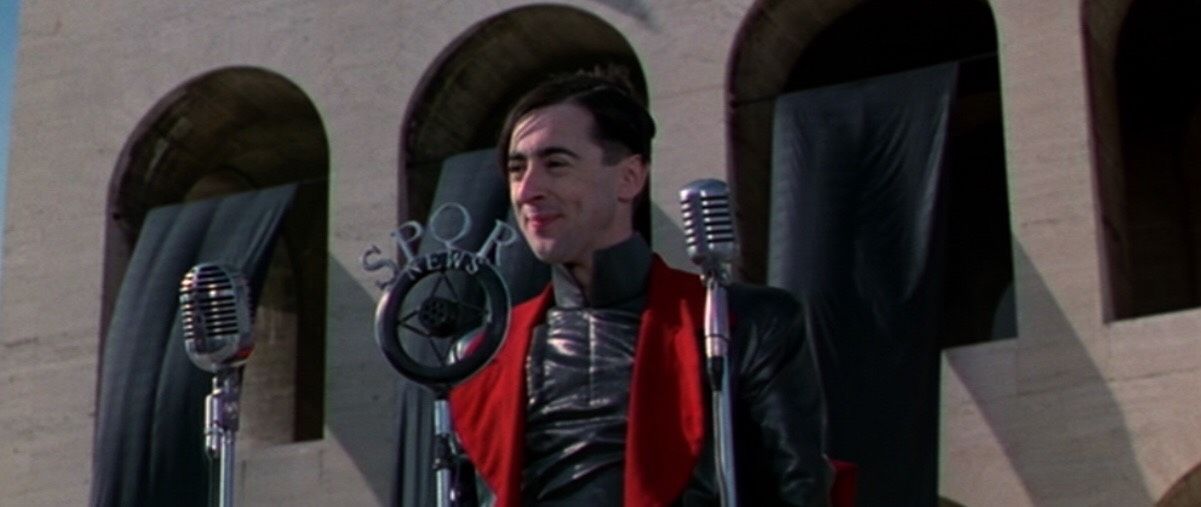
Movie adaptations of Shakespeare's plays are always in fashion, in part because the universal themes are just as relevant now as when they were first performed in London at the Globe. The ‘90s and early ‘00s were head over heels for the Bard, ranging from Kenneth Branagh's traditional take on Hamlet to the contemporary New York City-set version starring Ethan Hawke. Julia Stiles not only appeared in the latter, but she was also in 10 Things I Hate About You (aka The Taming of the Shrew) and O (aka Othello). Perhaps the most definitive retelling of this era was Baz Luhrmann's ultra-modern take on Romeo + Juliet, which married the text with guns, an indie-pop soundtrack, and Hawaiian shirts.
In 1999, Tony-winning theatre director Julie Taymor made her feature film debut with a lesser-known Shakespeare interpretation, mixing past and present with a daring take on the Rome-set violent tragedy Titus Andronicus. Simply called Titus, the costume design by four-time Oscar winner Milena Canonero is an audacious mix of periods that she referred to as "retro-contemporary-futuristic." A unique blend of 1930s attire, gold breastplates, leather capes, and metallic glam rock, Canonero's genre-bending expertise was utilized by Taymor to add to her fantastical vision.
Canonero's first Academy win was for her work in 1975 with designer Ulla-Britt Söderlund on Stanley Kubrick's period drama Barry Lyndon. She first worked with the auteur on A Clockwork Orange, which mixed dandy-era garb with exaggerated accessories including the codpieces worn over Alex (Malcolm McDowell) and his fellow Droogs' white pants.
There was no such playing around with garments on Barry Lyndon, which saw the designers recreate clothing from 18th-century paintings by artists including William Hogarth. Borrowing clothes from collectors meant the designing pair could learn actual techniques from the period to meet Kubrick's fastidious demands. Her third and final collaboration with Kubrick was on The Shining, combining normalcy with horror — the latter covering several different decades of Overlook Hotel guest and employee style.
The stylized period-meets-contemporary aspect has become a signature of sorts for the legendary Italian designer who now enjoys a long-standing collaboration with Wes Anderson, including the Oscar-winning The Grand Budapest Hotel. Her third Oscar win was for her exquisite work on Sofia Coppola's 2006 Marie Antoinette, which married Versailles decadence with contemporary couture frills. Her work on Titus was also recognized by the Academy, which included over 500 costumes built specifically for the film. Drawing on wartime symbolism from multiple centuries, Canonero blended ancient armor with exaggerated leather silhouettes that evoke 1930s European fascists.
The fusion of genre is evident from the very opening, with a scene that might make you question whether you hit play on Titus or another movie; a 20th-century kitchen, not ancient Rome, is home to a young boy aggressively playing with plastic toys. A familiar war role-playing game unfolds, interrupted by the arrival of a man crashing through the window and grabbing the boy.
During a New York Times set visit in 1998, Taymor referred to her interpretation as a "real millennium piece" — yes, this is when everything and everyone was preoccupied with the year 2000. But rather than being obsessed with Y2K fears, this interpretation is a nod to various points from the previous 1000 years including the Theodosius period (379 - 395) in which the original Shakespeare text is set, Mussolini's mid-century dictatorship, 1970s rock, and even the era the play was written in.
Taymor had huge success adapting The Lion King for Broadway, so it might have been considered an odd move to follow a Disney musical with one of Shakespeare's more obscure plays, one that also happens to be his most violent. This wasn't the director's first stab (excuse the pun) at this tragedy; in 1994 she produced a stage version in which she also mixed '30s iconography with contemporary imagery. The beauty of the Bard (no matter the format) is that it is open to time period interpretation, regardless of how language has changed. In the case of Titus, this means some characters look like they have just stepped off the set of Gladiator or Velvet Goldmine, while others could be taking a break from Cabaret.
Alan Cumming was actually taking a break from playing the Emcee in Cabaret revival on Broadway to inhabit the role of the petulant new Emperor of Rome, Saturninus — ditching the bow tie and suspenders from the iconic musical for a heavy black and red leather trench coat that resembles a stylized fascist aesthetic.
This is the closest Saturninus gets to the battlefield. He cares more about optics and the party scene than getting his hands dirty, hence why his military garb has leopard print trim and lapels. Choosing Tamora, Queen of the Goths (and former Rome enemy) to be his new bride is his way of sticking it to Titus (Anthony Hopkins) after his desired bride flees with his brother, Bassianus (James Frain).
Their post-nuptials party is a decadent scene that could be one of the extravagant soirees as described by F. Scott Fitzgerald in The Great Gatsby: a mix of metallics, sequins, fur, and animal print. Every inch of clothing in this scene is pure frivolity, injecting a camp aesthetic early on. Saturninus' brother does not match his sartorial decadence, wearing neutrals lacking any kind of flair.
Vintage cars don't scream ancient Rome, but this is not meant to mimic the actual time period. When Saturninus and Bassianus rock up to the Palazzo della Civilta del Lavoro — the movie was shot mostly on location in Italy — to make a case as to why they should rule the Empire, the costumes of those officials standing on the steps also mirror those from the '30s.
This building (also known as Square Colosseum) is significant to this particular period because it was built at the behest of Mussolini and the number of columns and arches correlate to the number of letters in the dictator's name. Time and place intersecting can be seen in the costume and production design throughout the film.
Saturninus is not alone in his love of the dramatic or frivolous attire; his new Queen of Rome also partakes in her fondness for statement attire. The gold breastplate makes an instant impression paired with a lamé gown. Described by Lange during the set visit as "Wagnerian" and "the least flattering thing I've ever put on my body," the finished version on-screen looks incredible even if it didn't have that initial aesthetic.
A mix of gold, white, black, and red garments creates a vision of opulence to match her rise (and subsequent fall). Scarlet is utilized during scenes of passion and violence, including a stunning riding coat and pillbox hat.
Her sons Demetrius (Matthew Rhys) and Chiron (Jonathan Rhys Meyers) look like wannabe rock stars with bleach blonde hair and a closet that is part Ziggy-Stardust, part-Poison. Aluminum foil pants, red snakeskin, leather boots, chains, metallic overalls (worn without a shirt underneath), and tiger print ensure this pair is always the focus whenever they are on screen.
Playing arcade games and gyrating on a pool table is just one of the ways Taymor further emphasizes their debauchery. Their behavior extends far beyond brattiness, and an argument over a desired woman as if she is a toy turns violent in a horrifying sequence that sets the final act in motion — thankfully, the mutilation and rape of Lavinia occur off-camera.
Taymor's vision is at its most surreal when Tamora and her sons appear to Titus under the guise of Revenge, Murder, and Rape in a bid to outwit him. Animal print becomes animal fur and feathers in an exaggerated version of their earlier costumes, with Tamora wearing a headdress made out of knives and cones on her hands.
The ambitious nature of this adaptation is evident in this somewhat absurd tableau, which mixes camp with horror in approach.
The titular Titus doesn't get the same level of sartorial camp thrills, but there are several notable moments during his evolution from celebrated hero to avenging father. His leather red cape is striking at the start of the movie when he is riding high and his military prowess is woven into the details. As the movie progresses, knits resembling chain mail reflect his remaining link to warfare (even at his lowest ebb).
Pie revenge is a familiar concept to anyone who has watched or read Game of Thrones — a trick that existed long before George R.R. Martin's various baked acts of revenge. Titus fully hams it up in the banquet sequence in chef's whites to match the dress code of the unwitting subjects.
White worn at this climactic juncture in a tragedy is a signal that blood will be shed. After all, Titus Andronicus doesn't have a reputation for being Shakespeare's most violent play because everyone lives happily ever after. However, Milena Conorero's retro-contemporary-futuristic costume design ensures they die in style.
